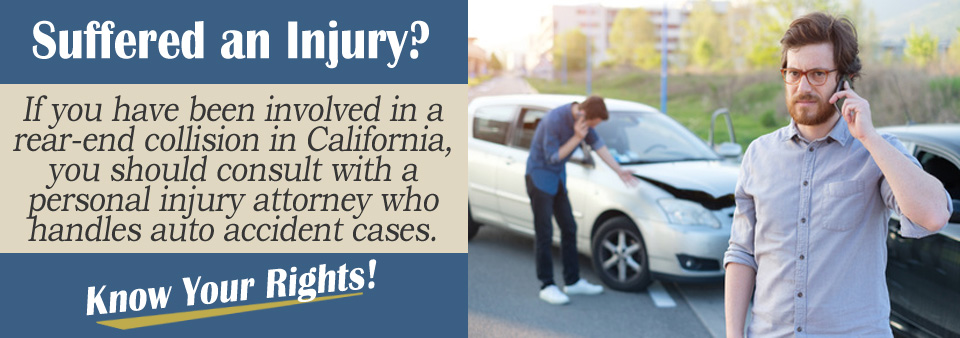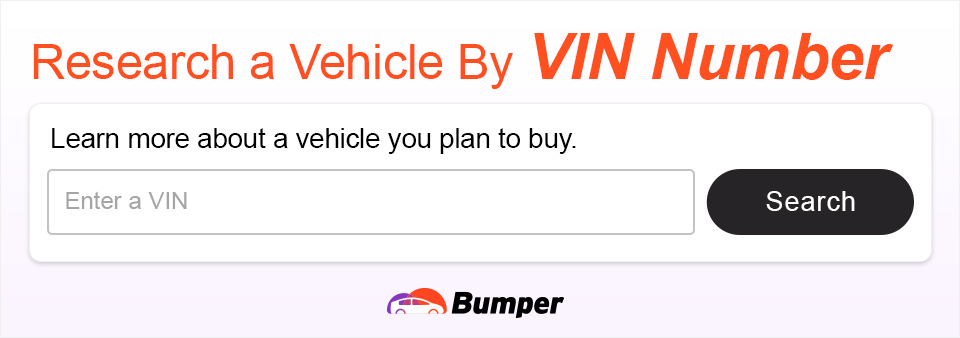If you have been rear-ended by another vehicle in California, you have suffered damages. When a rear-end collision occurs, usually the driver who struck your vehicle from behind is at fault regardless of why your vehicle was stopped.
The state of California vehicle code does not have fault codified into it. Police determine fault when they prepare the accident report. The basic rule of the road that requires a driver be able to stop if traffic stops in front of him and the damages to the vehicle are used to help determine the fault of the crash.
If a driver cannot get stopped in time, he or she is driving too closely or is driving too fast. If you have been involved in a rear-end collision, you might be able to pursue damages by filing a California personal injury claim.
California is a Pure Comparative Negligence Law State
Most rear end crashes tend to be the fault of the vehicle that hit another vehicle from behind, but some accidents can be complicated. For example, say the driver in front was momentarily distracted while driving and was hit in the rear there may be an element of fault on both sides.
Certainly, even if there is only a hint of fault the defendant’s insurer is going to make appoint about it in an effort to reduce liability.
Each state has its own rules about assigning liability when there is shared fault in a car accident. In some states, like Virginia, if you are even only a tiny bit to blame for an accident you are claiming compensation for, you will lose all chance of obtaining compensation.
Most states are not this strict and allow some kind of proportional calculation to determine the level of compensation that can be awarded in a shared fault situation.
California has what is called a pure comparative negligence law. This allows damages to be claimed in proportion to the perceived degree of fault. For example, if a driver was hit in the rear and it was later determined that he was 20% at fault because of faulty rear brake lights, then this claim for compensation would be reduced by 20%.
If he had claimed $5,000 in total damages, the maximum that could be awarded would be $4,000 (80% of $5,000).
What makes California different from other comparative negligence states is that a driver whose fault is more than 50% can still claim compensation. For example, if the driver who was hit in the rear was determined to be 80% at fault, with 20% blamed on the other driver, then the plaintiff could only receive a maximum of 20% of what was claimed.
In practice, it is likely that both drivers might file opposing claims against each other’s policies. The proportion of fault would determine the amount of compensation paid out to each driver.
Negligence Impacts A Personal Injury Claim in California
California is a comparative negligence state. That means even if you were partially at fault for the crash, the other driver is still liable for their portion of the damages. So if you were each equally at fault, then the damage liability is split 50/50.
You can recover compensation for your damages by filing a personal injury claim against the other party. You will have to show responsibility and prove the other driver is responsible for the crash and the damages that resulted.
Personal injury claims can be complicated, so you should consult with an experienced auto accident injury lawyer. The investigation should determine who was responsible and divide the liability for the crash.

Evidence to Gather
In any shared fault type of accident, the evidence that can support each driver’s claim will be essential in deciding who eventually pays what. In practice, apart from sharing registration details and insurance details, both drivers will attempt to obtain as much evidence as possible to support their position.
This is easier if the only damage was to both vehicles and there were no injuries, but even if there were injuries as well, it pays to try and obtain as much evidence as possible at the crash scene. Typically useful evidence to support a claim includes:
- Photos taken of both vehicles showing positions and damage done;
- Photos of any injuries sustained;
- Eye witness statements from anyone who saw what happened and who would be prepared to make a statement;
- Police report if police attend the accident scene;
- Video footage if any taken by a security camera. This is most likely if the accident took place at a busy city intersection;
- Details from car repairers of where damage was done and whether lights, signals, steering and brakes were all working normally.
- Medical reports, including test results, x-rays and other evidence that an injury happened because of the crash;
- All evidence of costs, including damage bill for vehicle and costs of medical treatment.
Make sure you gather evidence after a car accident, make sure to take photos of the accident including the surrounding area, include stop signs, traffic lights, and stop lights as well as the damage to your vehicle. Make sure you get statements from witnesses if there are any. Include any police and medical reports too.
Damages Resulting From Being Rear-Ended in California
A variety of damages can result from an accident. Being rear-ended, such as gettingrear-ended while stopped, will cause damages to your vehicle. It will suffer body damage, paint damage, and possibly mechanical damage. Keep any written estimates for repairs.
Keep receipts for towing, rental cars, or any repairs that you have done to get your vehicle back on the road. You will also incur medical expenses. You will need to maintain documentation of your lost wages.
You can also claim pain and suffering, future loss of earnings, any permanent disabilities, permanent scarring and disfigurement, future medical expenses and more. Your attorney can help you determine what damages you suffered and calculate the fair value of your claim.
Don't try to negotiate with the insurance company on your own. Instead, get an attorney to help you with the claims process.
Is the Second Driver Always At Fault?
In most rear end collisions, fault is clear. Usually the driver is distracted, speeding, or following too close. However, this is not always the case and it is still possible that you can be compensated. Low light situations like fog or rain can make fault a little more complicated. For example if you are in foggy weather, driving well below the speed limit and the car in front of you does not have functioning break lights this would complicate the case. An abrupt stop might cause you to hit the car, however at the time of the accident they were violating traffic law and therefore the accident could have been prevented.
Whiplash and Rear End Accidents
Whiplash is one of the most common injuries associated with a rear end accident. Whiplash is a strain of the neck caused by a rapid acceleration forward or backward. It is a soft tissue injury and therefore will not show up on a medical diagnostics test like an X-ray. It is a difficult injury to prove and yet can affect your ability to work. Make sure that you have the medical evidence from your doctor so that you can be properly compensated for whiplash.
Consult With A Personal Injury Attorney
If you have been rear-ended in California, you will need to consult with a personal injury attorney. Personal injury claims can be complicated, so to improve your chances of a fair settlement you need to talk with a lawyer.
California does have a statute of limitations for filing a claim, so if you wait too long you will lose your rights to recover damages. Most auto accident lawyers in California work on a contingency basis, so you have nothing to lose.
Your lawyer will not be paid until you get paid. Schedule a free case evaluation with a California personal injury lawyer today.
